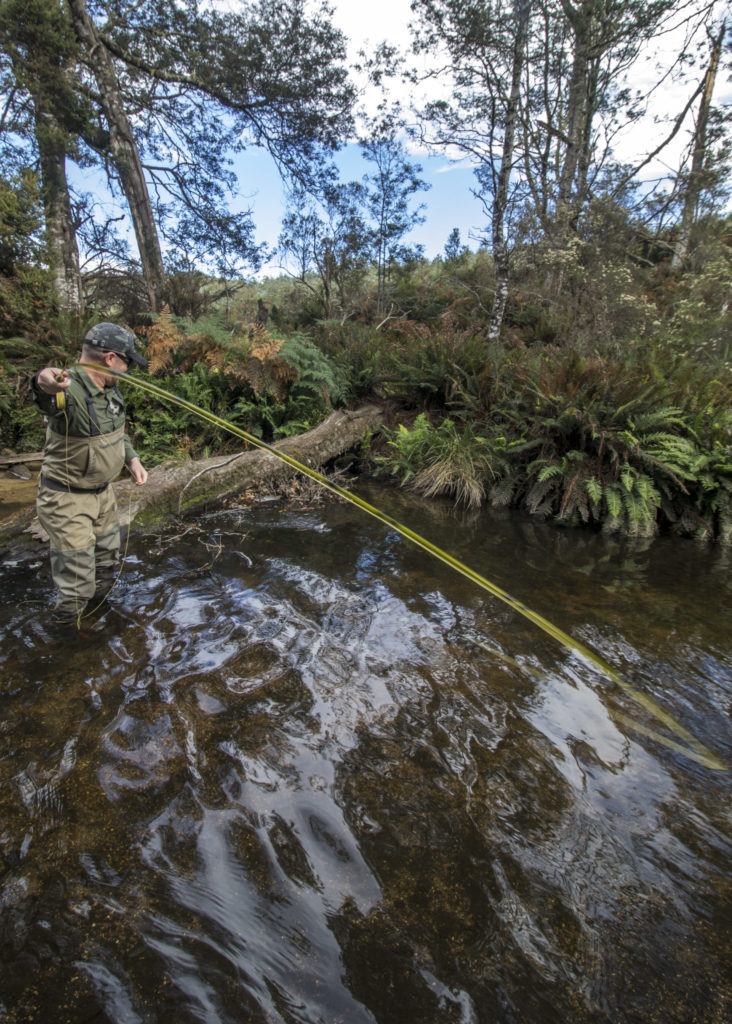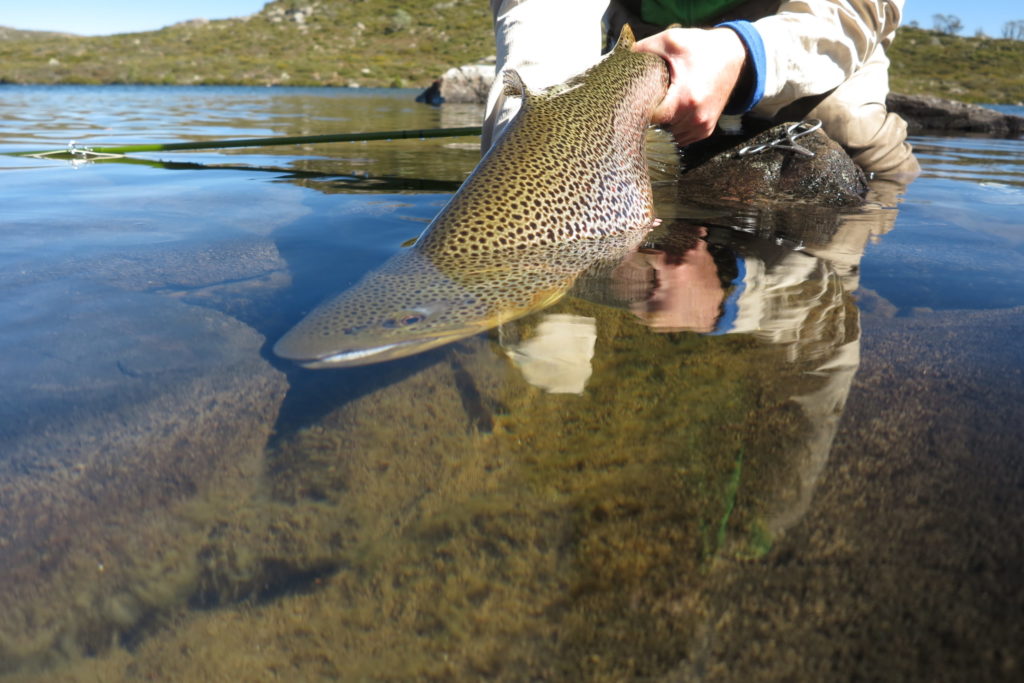
Epic 370 on a tight Tasmanian stream
For the past season or two we’ve been using Epic glass rods as our personal creek rods (myself, Sim, Peter and Beevs). Most of our small stream and up-close fishing (willow grub fishing) is on overgrown tussocky streams, or within willow swampland, so we choose glass as the most resilient rod material. Why? You can accidently whack an overhead willow branch, or double-down on a solid willow grub feeder, and the rod (probably) won’t break. Glass also has an inherent ability to protect light tippets, with a better level of forgiveness than carbon. Pete loves targeting close-up baitfish feeders on the glass rod, while i’ll never forget the monster brown that bent the rod to the cork on five weight glass rod that Simone built.
So which rod weight and length should you choose? A shorter rod (eg the 370) will always have advantages in situations where overhead obstructions are ever present; think willow grubbers. On the flipside, a slightly longer rod (eg the 476) will give you better line control to reach over tussocks, as well as better striking ability (leverage) at distance. A three weight will protect light tippets extremely well (we occasionally use 2lb Maxima), while the four weight will handle unexpected wind far better. Beyond the rod itself, select the best flyline taper for the job. Flylines with longer tapers will produce gentle presentations (and vice versa for short tapers), and you can overweight the rod to generate a slower action if that’s what you prefer.
So if jungle-warfare and tight streams are your thing, or perhaps you love chasing overgrown trout in tight-quarters, glass rods are a perfect tool to fish short and protect light tippets.

Monster brown on the glass rod
(Note: RiverFly does not accept sponsorship from tackle companies, and paid for the 476 Epic fly rod, and 580 rod kit in this blog).
